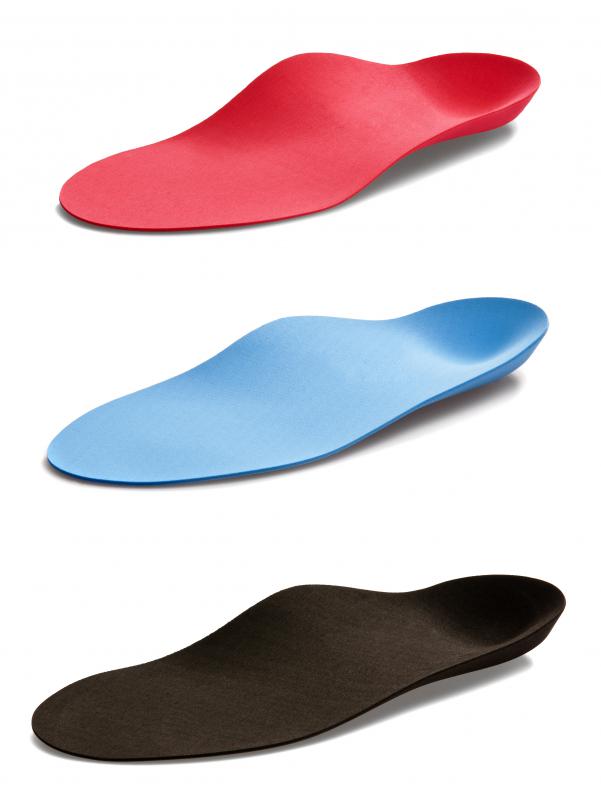At TheHealthBoard, we're committed to delivering accurate, trustworthy information. Our expert-authored content is rigorously fact-checked and sourced from credible authorities. Discover how we uphold the highest standards in providing you with reliable knowledge.
How do I Treat Foot Arch Pain?
Though it is usually not a cause for serious concern, foot arch pain can have significant implications for quality of life. Treating arch pain is done in a relatively simple fashion, with a combination of medication and minor adaptations such as stretching exercises. The most common cause for pain in the arch is plantar fasciitis, an inflammation of the plantar fascia, the inner sheath that holds many of the structures of the foot in place, and helps transfer weight between the heel and toes. Each foot actually has two arches -- the longitudinal arch, and the transverse arch -- both of which may be subject to pain from time to time.
Foot arch pain can present itself whenever anything goes wrong with the bones, muscles, or other supporting tissues of the foot. If the tissue that forms the arch of the foot becomes inflamed or otherwise irritated, any foot movement can be painful. Plantar fasciitis is responsible for this type of pain, and is characterized most often by arch pain early in the morning, or after standing or walking for a long time. Stretching exercises can help reduce the tension in this area, as well as increasing blood flow. Additional treatment may involve anti-inflammatory pain relievers such as ibuprofen, and the placement of specially designed insoles into your shoes, to help your feet bear weight more efficiently.

Many other potential causes for foot arch pain exist, and treatment will depend on the nature of the injury. Direct trauma, of course, can cause pain, as well as a sprain or strain of a tendon or muscle in the area. Small stress fractures in the bones of the feet, or even simple overuse, can also contribute to foot arch pain.
Treatment in most of these cases is best done at the first appearance of significant pain. Resting your feet while applying ice will go a long way to relieve pain, and keeping feet elevated while doing so is also beneficial. It is best to ice your feet with ice cubes in a plastic bag or a towel rather than with ice packs, since the latter can sometimes be too cold. Both acetaminophen and anti-inflammatory pain relievers can be used to treat foot arch pain as well.

Once preliminary measures like these have been taken, a doctor or physical therapist may decide to have you take additional corrective action, depending on the cause of the pain, and the likelihood that it will recur without further treatment. These measures may include muscle strengthening exercises or slight modifications in activity, which allow a person to stay fit without engaging in activities that may cause undue pain.
AS FEATURED ON:
AS FEATURED ON:














Discuss this Article
Post your comments